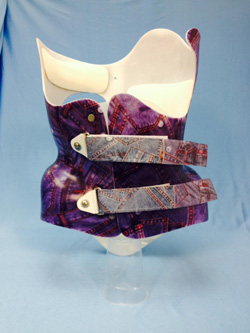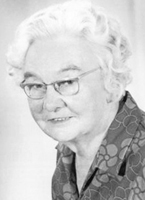|
Orthologix brings you quarterly information to keep you current on industry news, trends and insights. Orthologix is an orthotics and prosthetics practice delivering evidence-based care throughout the Delaware Valley.

FEATURED PRODUCT

The Cheneau® Brace and the Schroth Method for Scoliosis
The Cheneau brace is a thermoplastic scoliosis brace modeled on a hyper-corrected positive plaster cast of the patient. This is a three-dimensional correctional brace that has significant pressure and expansion areas built into it, providing correction in all three anatomical planes.
The brace is not merely a brace, but an all-embracing therapy to treat idiopathic scoliosis. The biomechanical design of the brace implements physiotherapeutic exercises and uses curvature-specific modules based on the Schroth Method.
Schroth Method
The Schroth Method for scoliosis is a conservative exercise in a three-dimensional approach to elongate the trunk and correct imbalances of the spine. The goal is to develop the inner muscles of the rib cage in order to change the shape of the upper trunk and correct any spinal abnormalities. The patient utilizes specific exercises to straighten, centralize and de-rotate the spine with corrective breathing techniques.
Exercises are designed based on the curve patterns and severity, as well as the patient's function and mobility. The goal is to create awareness of the new posture and alignment through position, repetitions and breathing. Exercises are designed to reduce the flat back and rib prominence and restore alignment of the pelvis. Exercise positions may be modified in order to create the optimal position for the patient.
The Schroth therapist guides the patient with tactile stimulus so the patient has an understanding of where they need to breathe and elongate to create muscle activation to correct the curve.
Goals of Exercise:

- Stabilize curves
- Mobilize stiff body parts
- Improve postural alignment
- Teach activities of daily living
- Promote corrections
- Enhance neuromuscular control
- Increase muscle strength and endurance
- Reduce pain
- Improve cardio-pulmonary function
Difference from Other Braces
The brace takes 15 different curvature patterns into consideration, which de-rotates the body much better through the longitudinal axis, unlike other braces.
Benefits
The main benefit of the brace is the unique and highly effective biomechanical design tailored specifically to the patient. Successful treatment with the brace is based on targeted and consistent implementation.
Back to top

CASE STUDIES
“The effectiveness of the Schroth method of physical therapy for treating an adult with idiopathic scoliosis in an outpatient clinic in the United States with third-party payer constraints”
Berdishevsky, Hagit.
Scoliosis 2013, 8(Suppl 2):O1
Conclusion: These primary findings suggest that out-patient physical therapy utilizing the Schroth method may be a successful alternative to the traditional methods of treating scoliosis.
To read the study, visit: http://www.scoliosisjournal.com/content/8/S2/O10
“Long-term effects of the Chêneau brace on coronal and sagittal alignment in adolescent idiopathic scoliosis”
Ming-Qiao Fang, MD, Chong Wang, MD, Guang-Heng Xiang, MD, Chao Lou, MD, Nai-Feng Tian, PhD, Hua-Zi Xu, MD
Journal of Neurosurgery: Spine Oct 2015 / Vol. 23 / No. 4, Pages 505-509
Conclusion: The Chêneau brace can be useful for preventing curvature progression in patients with AIS. However, the results of this study reveal high variability in the effect of brace treatment on sagittal and pelvic alignment. Treatment with the Chêneau brace may also influence sagittal global balance.
To read the study, visit: http://thejns.org/author/Fang%2C+Ming-Qiao
“Effectiveness of Chêneau brace treatment for idiopathic scoliosis: prospective study in 79 patients followed to skeletal maturity”
Katarzyna Zaborowska-Sapeta, Ireneusz M Kowalski, Tomasz Kotwicki, Halina Protasiewicz-Fałdowska, Wojciech Kiebzak
Scoliosis 2011 6:2
Conclusion: Conservative treatment with Chêneau orthosis and physiotherapy was effective in halting scoliosis progression in 48.1% of patients. The results of this study suggest that bracing is effective in reducing the incidence of surgery in comparison with natural history.
To read the study, visit: http://scoliosisjournal.biomedcentral.com/articles/10.1186/1748-7161-6-2
“European braces widely used for conservative scoliosis treatment”
Theodoros B. Grivas, Angelos Kaspiris
Stud Health Technol Inform. 2010;158:157-166.
Conclusion: Correction of spinal deformities is achieved in conservative treatment with passive and active brace mechanisms. The mode of operation of modern braces is in accordance with various principles of correction, namely active or passive extension with the aid of a neck ring and correction by lateral pads, lateral pressure according to 3-point principle, compression, bending the trunk towards the opposite side, active bracing and correction by means of pressure exerted by bands during movement and by means of metallic blades.
Regarding the outcomes of brace application, the Cheneau-Toulouse-Munster brace has been found to decrease the coronal shift forward, the coronal tilt, the axial rotation, and to increase the sagittal shift forward and the sagittal vertebral tilt (3-D correction), obtaining an average primary correction 41% (thoracic, lumbar, double) (n = 52 patients) and a long term correction 14.2% thoracic, 9.2% lumbar double curves: 5.5% in thoracic & 5.6% in lumbar. In a recent report, at the end of treatment there was an improvement of Cobb angle correction of about 23% and after 5 years there was a stabilization of about 15 % (p value
To read the study, visit: http://www.sosort.mobi/pdf/European_braces.pdf
Back to top

PROFILE
 Katherina Schroth
Katherina Schroth
The system of exercises for scoliosis was developed in Germany in 1927 by the late Katherina Schroth, who was researching treatments for her own scoliosis condition. She suffered from moderate scoliosis while growing up and underwent treatment with a steel brace at the age of 16 before she decided to develop a different treatment for herself.
She worked to correct her deformities by inflating the concavities of her body selectively in front of a mirror. She attempted to mirror the deformities by overcorrecting with the help of certain pattern-specific corrective movements. The treatment included specific postural correction, correction of breathing patterns, and the correction of postural perception.
By the 1960s, the Schroth Method had become the standard non-surgical treatment for scoliosis and was further developed by Katherina’s daughter, Christa Lehnert-Schroth.
The first studies were carried out from 1989-1991, with the first prospective study published in 1995 in German.
The Schroth family has authored a number of books and articles to educate others about their method. Today, the Schroth Method is recognized as an alternative to surgery or other treatments all over the world.
Back to top

LEGISLATIVE NEWS
CMS Proposed MACRA Rules
The Centers for Medicare and Medicaid Services (CMS) released proposed new rules for the Medicare and CHIP Reauthorization Act (MACRA). As promised, the new rules feature some game-changers for health care providers around the CMS Quality Payment Program, specifically through the Merit-Based Incentive Payment System (MIPS) and alternative payment models (APMs).
Although PTs will not be included when the new systems begin in 2017, APTA Director of Regulatory Affairs Roshunda Drummond–Dye says that members of the profession can be assured that it's only a matter of time. "It's clear that CMS hasn't forgotten physical therapy," she said. "MACRA is the first tangible step toward mandating a payment system that bases reimbursement on quality of care and outcomes and begins the phase-out of fee-for-service, and PTs need to familiarize themselves so they're not taken by surprise when the change reaches them, possibly as early as 2019."
The proposed MIPS rule for next year affects physicians, physician assistants, nurse practitioners, clinical nurse specialists, certified registered nurse anesthetists, and groups that include those providers. Among other things, the new system consolidates the Physician Quality Reporting Program (PQRS), the Value-Based Modifier Program (VBM), and the "meaningful use" of electronic health records (EHR) program into a single system that will rate providers according to 4 "performance categories": quality of care, advancing care information, clinical practice improvement activities, and cost/resource use.
At the same time, CMS will get much more specific about requirements for approved APMs, and create a roadmap that will guide providers on forming or participating in models such as accountable care organizations and patient-centered medical homes.
Back to top

CONFERENCE
Conference
NEXT Conference & Exposition, June 8-11, Nashville, Tennessee
National Student Enclave (NSC) of APTA, Oct. 27-29, Miami
Pennsylvania Physical Therapy Association (PPTA) Annual Conference, Oct. 28-30, Lancaster Marriott at Penn Square, Lancaster, PA.
Back to top

Q & A
Please feel free to submit your questions on the Cheneau® Brace and the Schroth Method for Scoliosis as well as any other issue you would like addressed.

Back to top

Educational Workshops and Inservices
Orthologix is available to present educational workshops and inservices for your group or your facility. Email us at info@orthologix.com to schedule.

We hope you have found this issue of the Orthologix E-news informative.
Thank you for your subscription.
Back to top
|